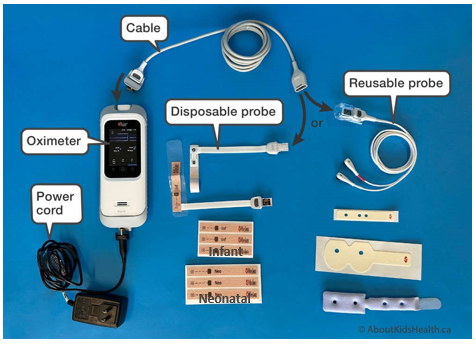ALERT: How to safely get a child with a tracheostomy to school on the bus?
Connected Care Quick Hits are up to date and evidence based recommendations for the care of children with medical complexity & technology dependence, from hospital to home.
ALERT: How to safely get a child with a tracheostomy to school on the bus?
SITUATION:
This Quick Hit was informed by Just In Time Training with home and community care providers preparing to care for children with tracheostomy tubes returning to school on a school bus.
BACKGROUND:
Going to school is an important opportunity for children with medical complexity to learn, socialize and spend time outside of home. Home and community care providers often support children who require specialized medical equipment at school.
‘Being ready for back to school’ for children with tracheostomies means there is a plan to safely manage emergency situations enroute or at school including blocked or decannulated tubes or rapid deterioration in clinical status.
ASSESSMENT:
The tracheostomy safety checklist can be used when preparing to travel on a school bus to confirm that all supplies for the day and equipment are available. Check to ensure all equipment is fully charged and functioning appropriately before leaving the home.
The following is a sample list of equipment for travel to school. Partner with the child's family caregiver(s) to confirm equipment needs (Note: the child may require additional equipment to be added to this list to ensure they have everything they need for travel and a full day at school):
Extra tracheostomy supplies
Manual resuscitation bag (with face or stoma mask)
Fully charged oximeter with cable and functioning probes
Portable, functioning suction machine, suction tubing, suction adjuncts and water for flushing tubing
If vented, portable ventilator, travel circuit with inline heat and moisture exchanger, fully charged power source,
Back-up battery for the ventilator in case of a power failure
Portable oxygen (if needed)
Contact list
Emergency plan
Medications
G tube supplies and feeds (if needed)
RECOMMENDATION:
Connected Care recommends the following considerations when traveling on a school bus with a child with a tracheostomy tube:
Assess the child’s overall status before leaving home and immediately before getting on the bus.
Suction the child’s tracheostomy tube prior to leaving home to minimize the likelihood for needing to be suctioned on the bus.
Ensure that the child is secured appropriately on the bus with a seatbelt or approved securement methods adapted for their transport (e.g. wheelchair).
Ensure the child is always in view to enable ongoing assessments during travel.
Perform suctioning and other routine care needs, if safe to do so, even if the bus is moving,
Keep medical equipment easily accessible during the ride (particularly suction supplies and emergency equipment).
Ensure that appropriate personal protective equipment (PPE) is available on the bus for routine and emergency care.
PLAN TOGETHER = READY TO ROLL!
Safety enroute to school depends on excellent communication with the child’s family caregivers, school care providers, teachers/staff and school bus driver.
At the start of the school year and regularly throughout the year, discuss the child’s bus and school emergency care plan with the family caregiver. Review this plan with the bus driver and confirm the driver’s role in assisting with an emergency.
Talk about what the child’s routine care looks like and how it will be carried out on the bus. Also discuss what will happen if there is a change in the child’s clinical status or an emergency.
Confirm the bus driver, when asked by the care provider, will take direction and if asked help by:
stopping the vehicle and pulling over
calling 911
retrieving supplies as requested
supporting the safety and comfort of other passengers
Connected Care Live is not to be used in the event of an emergency.














